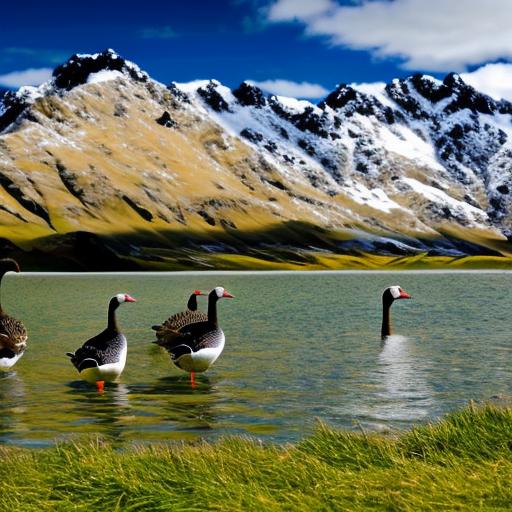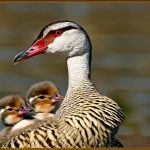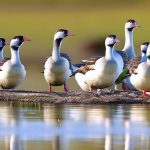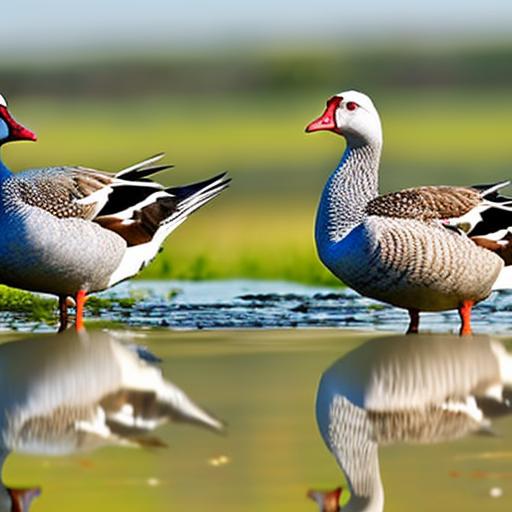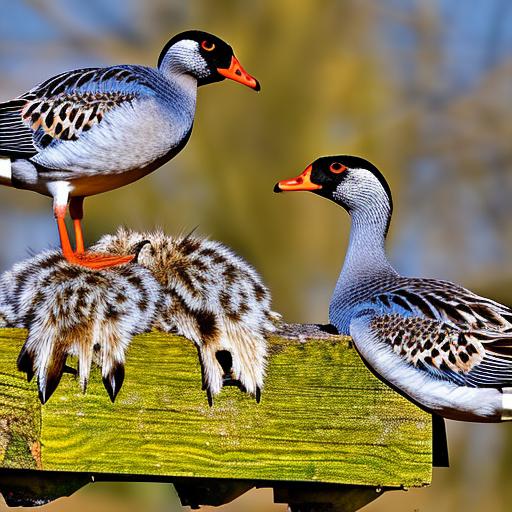Every year, as the seasons change and the weather begins to warm, the arrival of geese in New Zealand marks the beginning of their breeding season. These majestic birds, known for their distinctive honking calls and V-shaped flight formations, migrate to New Zealand from their wintering grounds in Australia. The arrival of geese in New Zealand typically occurs in late winter or early spring, as they seek out suitable nesting sites and breeding grounds. As they make their way across the sky in large flocks, their presence is a sight to behold, signaling the start of a new chapter in their life cycle.
The arrival of geese in New Zealand is a natural spectacle that has captivated the attention of birdwatchers and nature enthusiasts for generations. Their graceful flight and synchronized movements as they navigate the skies are a testament to their remarkable instincts and adaptability. As they touch down on the shores and wetlands of New Zealand, they begin to establish their territories and prepare for the upcoming breeding season. The arrival of geese in New Zealand is a reminder of the interconnectedness of the natural world and the cyclical patterns that govern the lives of these magnificent creatures.
The Mating Rituals of Geese
Once the geese have arrived in New Zealand, they begin to engage in elaborate mating rituals that are both fascinating and complex. The male geese, known as ganders, will often engage in elaborate displays of courtship to attract a mate. This may involve vocalizations, posturing, and displays of aggression towards rival males. The female geese, known as geese, will carefully evaluate the displays of the ganders before choosing a mate. Once a pair has bonded, they will engage in preening each other’s feathers and engaging in synchronized movements as a way of strengthening their bond.
The mating rituals of geese are a testament to the importance of courtship and pair bonding in their breeding behavior. These rituals are not only a means of selecting a mate, but also serve to establish and reinforce social bonds within the flock. As the breeding season progresses, the pairs will work together to build nests and raise their young, relying on their strong bond to ensure the survival of their offspring. The mating rituals of geese are a beautiful display of nature’s intricate dance, showcasing the importance of partnership and cooperation in the animal kingdom.
The Nesting and Hatching Process
After the mating rituals have taken place, the geese will begin the process of nesting and hatching their eggs. They will seek out suitable nesting sites in wetlands, marshes, or grassy areas near water, where they can build their nests out of grasses, reeds, and other vegetation. The female goose will lay a clutch of eggs, typically ranging from 4 to 8 eggs, and will carefully incubate them for around 25-30 days. During this time, the male goose will stand guard and protect the nest from potential predators.
Once the eggs have hatched, the goslings will emerge from their shells and be cared for by both parents. The goslings are precocial, meaning they are born with their eyes open and are able to walk and swim shortly after hatching. The parents will lead their young to water where they can forage for food and learn essential survival skills. The nesting and hatching process is a critical stage in the breeding season for geese, as it sets the stage for the next generation of birds to thrive and carry on the cycle of life.
The Behavior of Geese During Breeding Season
During the breeding season, geese exhibit a range of behaviors that are specific to this time of year. As they establish their territories and defend their nests, they may become more vocal and aggressive towards intruders. The ganders will often engage in displays of dominance and aggression towards rival males as they compete for mates and territory. The females will also exhibit protective behaviors towards their nests and young, ensuring their safety and well-being.
In addition to territorial behaviors, geese may also engage in courtship displays and pair bonding rituals as they seek out mates and establish strong bonds with their partners. These behaviors are essential for ensuring successful reproduction and the survival of their offspring. As the breeding season progresses, the geese will continue to exhibit these behaviors as they raise their young and prepare them for independence. The behavior of geese during breeding season is a testament to their dedication to ensuring the continuation of their species and the survival of future generations.
The Spectacular Sounds of Geese Breeding Season
One of the most striking aspects of geese breeding season is the spectacular sounds that accompany this time of year. The honking calls of geese can be heard echoing across wetlands and marshes as they communicate with one another and establish their territories. These calls serve as a means of communication between individuals within the flock, signaling danger or alerting others to potential threats.
The sounds of geese breeding season are not only a means of communication but also serve as a form of social bonding within the flock. The synchronized calls and vocalizations create a symphony of sound that is both captivating and awe-inspiring. As the breeding season progresses, these sounds become more pronounced as the geese engage in courtship displays and territorial behaviors. The spectacular sounds of geese breeding season are a testament to the vitality and energy that accompanies this time of year, creating an unforgettable auditory experience for those who witness it.
The Impact of Geese Breeding Season on the Environment
The breeding season of geese has a significant impact on the environment, influencing both the ecosystem and other species within it. As geese establish their territories and build nests, they can have an effect on vegetation and habitat structure within wetlands and marshes. Their foraging activities can also impact plant communities and nutrient cycling within these ecosystems.
In addition to these direct impacts, geese breeding season can also have indirect effects on other species within their habitat. Their presence can attract predators such as foxes or raccoons, which may prey on their eggs or young goslings. This can have cascading effects on other species within the food web, influencing population dynamics and community structure within these ecosystems.
Despite these potential impacts, geese breeding season also plays a vital role in maintaining ecosystem health and functioning. Their foraging activities can help to control vegetation growth and nutrient cycling within wetland habitats, contributing to overall ecosystem balance. Additionally, their presence can provide opportunities for other species to coexist within these habitats, creating a diverse and dynamic ecosystem.
The Best Places to Witness Geese Breeding Season in New Zealand
New Zealand is home to a variety of wetland habitats that provide ideal breeding grounds for geese during their breeding season. Some of the best places to witness geese breeding season in New Zealand include Lake Ellesmere/Te Waihora in Canterbury, where large flocks of geese gather to breed and raise their young. This stunning lake provides ample opportunities for birdwatchers to observe these magnificent birds in their natural habitat.
Another prime location for witnessing geese breeding season is at Pūkorokoro Miranda Shorebird Centre in Waikato, where migratory shorebirds including geese congregate during their breeding season. This internationally renowned site offers birdwatchers a chance to witness these birds up close as they engage in courtship displays and nesting behaviors.
In addition to these locations, wetlands such as Whangamarino Wetland in Waikato and Kopuatai Peat Dome in Waikato also provide excellent opportunities for observing geese during their breeding season. These diverse habitats offer unique insights into the behaviors and ecology of geese as they navigate through this critical stage in their life cycle.
In conclusion, the arrival of geese in New Zealand marks the beginning of their breeding season, a time filled with elaborate mating rituals, nesting and hatching processes, unique behaviors, spectacular sounds, environmental impacts, and prime locations for observation. As these majestic birds navigate through this critical stage in their life cycle, they provide an awe-inspiring spectacle for birdwatchers and nature enthusiasts alike. Their presence serves as a reminder of the interconnectedness of the natural world and the importance of preserving these vital habitats for future generations to enjoy.
Meet Walter, the feathered-friend fanatic of Florida! Nestled in the sunshine state, Walter struts through life with his feathered companions, clucking his way to happiness. With a coop that’s fancier than a five-star hotel, he’s the Don Juan of the chicken world. When he’s not teaching his hens to do the cha-cha, you’ll find him in a heated debate with his prized rooster, Sir Clucks-a-Lot. Walter’s poultry passion is no yolk; he’s the sunny-side-up guy you never knew you needed in your flock of friends!

